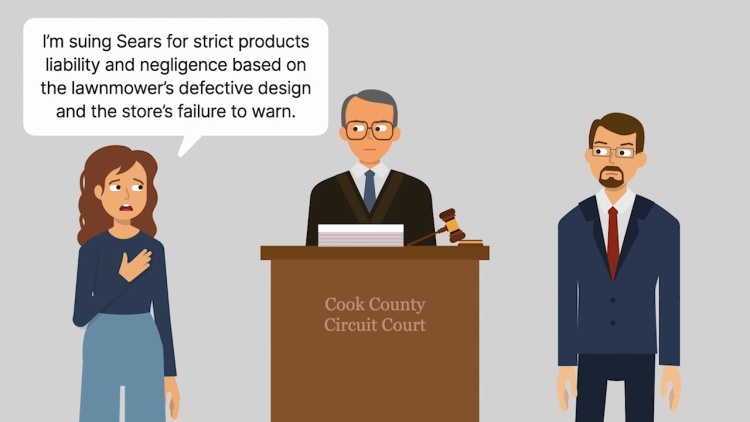Townsend v. Sears, Roebuck & Co.
Illinois Supreme Court
227 Ill. 2d 147, 879 N.E.2d 893 (2007)
- Written by Jamie Milne, JD
Facts
Michigan resident James Townsend purchased a ride-on lawnmower at his local Sears, Roebuck & Co. (Sears) (defendant) store. One day, James’s three-year-old son, Jacob, was seriously injured when James unknowingly reversed the lawnmower over him. James’s wife, Michelle Townsend (plaintiff), sued Sears both individually and on Jacob’s behalf in Illinois state court, asserting a personal-injury claim for Jacob’s injuries. Specifically, her complaint alleged strict products liability and negligence based on a design defect and failure to warn. In its defense, Sears argued in part that the Townsends’ own negligence contributed to Jacob’s injuries. Sears was a New York corporation with its headquarters and principal place of business in Illinois. The parties disputed what law governed liability and damages. Michelle argued for Illinois law, which applied strict liability to design-defect claims, did not have a statutory cap for compensatory damages, and allowed punitive damages. Sears argued in favor of Michigan law, which required proof of negligence in design-defect cases, had a statutory cap for compensatory damages for noneconomic injuries, and did not allow punitive damages. The trial and appellate courts concluded that Illinois law governed. Sears appealed.
Rule of Law
Issue
Holding and Reasoning (Freeman, J.)
What to do next…
Here's why 899,000 law students have relied on our case briefs:
- Written by law professors and practitioners, not other law students. 47,000 briefs, keyed to 994 casebooks. Top-notch customer support.
- The right amount of information, includes the facts, issues, rule of law, holding and reasoning, and any concurrences and dissents.
- Access in your classes, works on your mobile and tablet. Massive library of related video lessons and high quality multiple-choice questions.
- Easy to use, uniform format for every case brief. Written in plain English, not in legalese. Our briefs summarize and simplify; they don’t just repeat the court’s language.






